It’s our sincere hope that each of you, our readers, will fully enjoy and appreciate this article about these 3 Singularly Scintillating Seals. We certainly enjoyed pulling the data together for you. May it provide you all with both education and increased awareness.
Naturally, though, these few species represent only a few of the many related creatures. Indeed, the marine regions of the globe abound with such marvels. To learn of some of the other wonders present here, check out some of our other articles.
Caspian Seal
Caspian Seal Facts
- Leading off this article about these 3 Singularly Scintillating Seals comes the beautiful mammal known as the Caspian Seal.
- This beautiful small creature, unique in a surprising way, most frequently goes by the informative common name of the Caspian Seal. Unlike many of its relatives, this intriguing animal does not, for the moment, at least, have another general name.
- Among scientific professionals, such as researchers, however, it’s typically referred to by its official name. Fortunately for the layperson, that’s an extremely simple term, as such things go. That’s because it holds the technical moniker of the Pusa caspica.
- The animal received that official name due to the work of the respected German naturalist, Johann Friedrich Gmelin. He recorded the first official recognition of the pinniped as a separate and distinct species. He further accomplished this in 1788.
- Regardless of the name one chooses to employ, though, it remains a remarkable work of Nature and evolution. Evidence also suggests an intriguing origin for the creature. It’s thought to be descended from ringed seals trapped in the region by melting ice sheets.
- Sadly, its population, already limited by the nature of its range, appears to be declining. The principal reason for this seems to be a virus spreading through its population. Due to these factors, the IUCN currently lists the mammal as Endangered on its Red List.
- The amazing animal also faces other threats, as well. These include intentional human activities, such as hunting. Commercial ice-breaking routes also disturb important areas of their range. It’s additionally endangered by climate change, as most species.
Caspian Seal Physical Description
The amazing Caspian Seal quickly draws the attention of those fortunate enough to encounter it. It does so, however, for reasons other than sheer physical size. That’s because this particular seal, despite its other fascinating attributes, ranks as one of the smallest seals.
Like many of its kind, and indeed most species, it displays a moderate degree of the physiological characteristic of sexual dimorphism. In its case, though, this trait manifests itself in terms of pure physical size. Otherwise, the two genders appear virtually identical.
Overall, males of the distinctive pinniped tend to develop as slightly larger and bulkier in physique. Mature males average around 190 lb (86 kg) in weight. Although exceptional individuals do occur, of course, even they rarely exceed this amount by any great percentage.
In general, physicall mature specimens attain a body length of 50 – 51 in (126 – 129 cm). The genders also display different growth patterns. Females begin life somewhat smaller than males, but reach full growth more quickly. Males take 30 – 40 years, females just 10.
The tantalizing Caspian Seal also displays a visually appealing color pattern. This primarily consists of a background of gray. That, however, varies from light to dark, between individuals. The stomach also tends to display a very light gray, almost off-white, coloring.
Individuals of both genders also distinguish themselves from related creatures in another way. This species possesses comparatively short flippers. The front flippers typically develop moderate-sized claws. Shorter, narrower one’s however, usually manifest on the rear flippers.
- Kingdom: Animalia
- Phylum: Chordata
- Class: Mammalia
- Order: Carnivora
- Family: Phocidae
- Genus: Pusa
- Species: P. caspica
The beautiful Caspian Seal evolved as native to a region of the world already well known for its abundance of natural wonders. Unfortunately for it, though, it developed in a highly restricted portion of this region. This area lies between the continents of Europe and Asia.
That particular area, however, holds an interesting distinction. The very name of the animal further provides a clear indication of that precise zone of habitation. That’s because the impressive mammal lives exclusively in and around the waters of the Caspian Sea.
Although its overall range is limited, it typically makes the most of what it has available. That’s due to the fact that individuals and groupings alike appear in many different parts of the region. These inhabit the shoreline, rocky islands, and floating blocks of ice equally.
It does tend to remain in shallower regions, though. Most specimens rarely dive to depths greater than 160 ft (50 m). Occasionally, however, scattered individuals go much deeper. The greatest depth of dive ever recorded for this specific species reached 540 ft (165 m).
Much like its relatives, the Caspian Seal feeds as a carnivore. In its case, this consists primarily of various locally available varieties of fish. During certain periods of the year, though, many individuals also consume moderate quantities of differing small crustaceans.
Throughout most of the year, this wonder of Nature lives a mainly solitary life. The exception occurs during mating season, of course. Following a 11-month gestation period, the female generally gives birth to a single pup. A typical lifespan also equals 50 years.
Hawaiian Monk Seal
Hawaiian Monk Seal Facts
- The next Pinniped included in this compendium of 3 Singularly Scintillating Seals holds the moniker of the Hawaiian Monk Seal.
- The informative term used herein represents the common name for a particularly awesome species of earless seal. Its scientific name, meanwhile, remains that of the virtually unpronounceable term of Neomonachus schauinslandi.
- Its technical name may be almost impossible to remember, but certain facts about it remain nearly impossible to forget. One of those is the lamentable fact that this beautiful animal now forms one of only two remaining monk seal species.
- A third member of this grouping, named the Caribbean Monk Seal, now appears to be extinct. The first official recognition of this animal as a separate species occurred in the year 1899, at the hands of the German scientist, Hugo Schauinsland.
- Quite sadly, its population also appears to be in a steep decline. Current official estimates place its surviving numbers at roughly 1,400 individuals. As a result, the IUCN presently lists the Hawaiian Monk Seal as Endangered on its Red List.
- Since the creature inhabits a small, specific range, this number remains highly concerning. Potential habitat loss obviously forms a very serious concern. Its greatest threat, though, most likely comes in the form of the effects of climate change.
Hawaiian Monk Seal Physical Description
The beautiful Hawaiian Monk bears a strong resemblance to its cousins, but distinguishing characteristics do exist. It does, however, naturally share many of the same characteristics. Among these remains the fact that it displays a moderate degree of sexual dimorphism.
In the case of this particular animal, that trait manifests itself in terms of sheer physical size. Adult males of this incredible creature attain an average body length of roughly 7 ft (2.1 m). These also weigh an average of between 300 – 400 lb (140 – 180 kg).
The females of the species, though, generally reaches a somewhat larger size. Unlike the male, she typically grows to around 8 ft (2.4 m) in length. Her weight, meanwhile, usually averages significantly greater, measuring at around 400 – 600 lb (180 – 270 kg).
Otherwise, the two genders appear very much the same. This specific pinniped possesses an overall slender shape. The animal also has a comparatively small, flat-shaped head, with large black eyes. It further has a shorter snout than some related species.
In coloring, the magnificent Hawaiian Monk Seal generally presents an overall grayish color. This does, however, typically tend to be a darker shade on the upper side, and lighter on the lower side. This does often slowly change to a brownish as it ages.
- Kingdom: Animali
- Phylum: Chordata
- Class: Mammalia
- Order: Carnivora
- Family: Phocidae
- Genus: Neomonachus
- Species: N. schauinslandi
Hawaiian Monk Seal Distribution, Habitat, and Ecology
Like some species, the very name of the wonderful Hawaiian Monk Seal provides a significant clue to its habitat range. Understandably, then, this fabulous creature inhabits a very specific, and in some ways limited, portion of the oceans of the world.
As the name implies, this mammal inhabits the waters around what we now call the Hawaiian Islands. This location, part of the United States, also seems to be the only area in which it appears. For the moment, evidence indicates that it never lived anywhere else.
More specifically, the majority of individuals appear to be concentrated in two distinct groupings. One group lives around the main islands of the chain. The other, though, lives around the various small islets and atolls that lie northwest of those main islands.
Roughly two-thirds of the life of the animal is spent at sea. This area principally consists of moderate depths, though. Most commonly the animal spends much of its time at depths of 984 ft (300 m) or more. It usually only comes to land to sun itself or to breed.
Quite understandably, the gorgeous Hawaiian Monk Seal evolved as a carnivore. Its prey mainly includes a variety of bony fish species that live on or around reefs. It does, however, also consume a moderate amount of smaller cephalopods and crustaceans.
Baikal Seal
Baikal Seal Facts
- Closing out this listing of our choices for inclusion in this article about 3 Singularly Scintillating Seals we present the aptly-named Baikal Seal.
- This beautiful, as well as unique, mammal most frequently goes by this appropriate common name. It also has a few other, though less often used, general names, though. These include the very similar Lake Baikal Seal and the simple name Nerpa.
- Among scientific professionals, however, such as researchers, it’s probably better known by its formal, technical name. Fortunately, that’s a relatively easy to pronounce term, as such things go. That’s because it bears the official moniker of Pusa sibirica.
- It received that formal name due to the efforts of the respected German researcher, Johann Friedrich Gmelin. He recorded the first official recognition of the animal as a separate and distinct species. This scientifically noteworthy deed occurred in 1788.
- It truly stands out from all its related species, across the globe. That’s because of an utterly unique characteristic, though not in terms of physicality. This magnificent creature evolved as the only known solely freshwater inhabiting pinniped in the world.
- For the moment, at least, it appears to be maintaining a population base that’s both sizable and stable. This fortunate situtation further seems to hold true throughout the entirey of its native range. The IUCN, therefore, presently lists it as Least Concern.
- It nevertheless does face the same potential dangers as most other species in the world. These include habitat loss and degradation, largely due to pollutants entering their habitat. The species also faces the threat of ongoing climate change, as we all do.
Baikal Seal Physical Description
The fabulous Baikal Seal also stands out for reasons wholly unrelated to its choice of habitat. That’s because it additionally ranks as distinctive in a purely physical way. This beautiful marvel of Nature and evolution also qualifies as one of the smallest of all the true seals.
Nature, however, is no respecter of such things. This remarkable animal easily draws the interest of those who encounter it. One of the things that those knowledgeable of such matters notice first is the extremely small degree of the trait of sexual dimorphism.
In its case, this characteristic manifests itself in terms of pure size. More specifically, males attain a larger size than females, on average, but only slightly. Otherwise, both genders present virtually identical appearances. This complicates simple visual gender distinction.
Overall, the species reaches an average body length that ranges from 43 – 55 in (1.1 – 1.4 m). Individuals of both genders attain weights measuring from between 139 – 154 lb (63 – 70 kg). The largest known individual ever measured 65 in (1.65 m) and weighed 290 lb (130 kg).
The general body shape, therefore, is best described as stout. The species also displays a striking pattern of coloring. The coats of these wonders typically present a uniformly steel-gray shade on the back and sides. The underside, though, shows a distinctive yellowish tinge.
On rare occasions, however, individuals of the Baikal Seal present spotted coats. As many creatures, its appearance also varies with the aging process. In their case, this aspect of its physiology slowly changes to a brownish shade. By contrast, new pups have white, silky fur!
- Kingdom: Animalia
- Phylum: Chordata
- Class: Mammalia
- Order: Carnivora
- Family: Phocidae
- Genus: Pusa
- Species: P. sibirica
Baikal Seal Distribution, Habitat, and Ecology
The marvelous Baikal Seal makes its home in an extremely remote region of the globe. It’s not one that’s known for its abundance of mammalian life, however. That’s due to the surprising fact that this particular variety of pinniped lives in the region of Siberia, in Asia.
Even there, though, it only resides in one, location, itself unique. As its name suggests, the intriguing seal lives only in and around the waters of Lake Baikal. How the animal came to live in this completely landlocked region, however, still remains a complete mystery.
Various theories to explain the enigma do exist, of course. One thoery postulates that their ancestors may have strayed up rivers, exploring, only to be trapped somehow. Others suggest that this body of freshwater had a link to the ocean at some point in the distant past.
Like its many relatives, this variety of eared seal evolved as a powerful predator. Unlike them, though, the species feeds on a highly limited variety of prey, due to the situation. Its main prey consists of a species of fish found only in this one lake, known as the golomyanka.
The Baikal Seal lives a primarily solitary life. Individuals also tend to migrate from one part of the enormous lake to another, depending on the season and other factors. In general, though, its numbers remain most concentrated in the northern parts of the enormous lake.
Though large groups do occasionally form, these typically remains short-lived. After mating, females typically deliver one pup, though multiple births do occur. Females generally raise the young alone, until it matures. Males tend to remain under the ice throughout the winter.
3 Singularly Scintillating Seals
It’s our great hope that you thoroughly enjoyed reading, and hopefully learning from, this article about these 3 Singularly Scintillating Seals. It’s also our fervent hope that doing so has left you with either a new or renewed appreciation for such wonders of Nature.
Unfortunately, however, many of their kindred around the world now find themselves facing dire threats to their continued existence as a species. Many of those dangers, in fact, stem from the actions of mankind. We must do all we can to protect and preserve them all.
Check out our other articles on 5 Tantalizing Island Trees, 6 Mysterious Natural Phenomena, 7 Intriguing Terrestrial Invertebrates, 5 Surprising Freshwater Animals
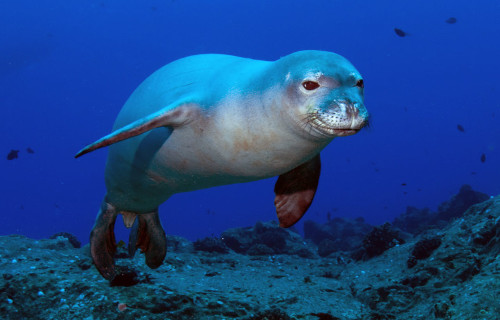
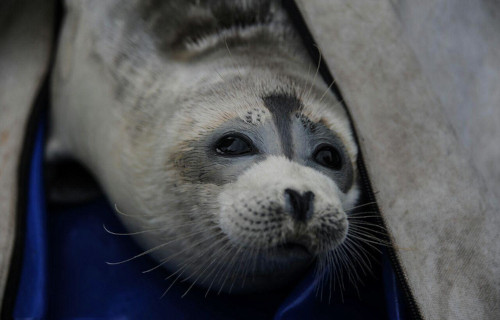

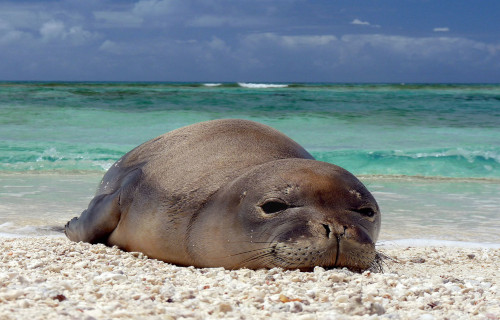
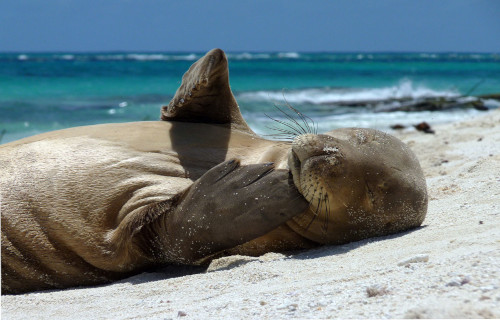
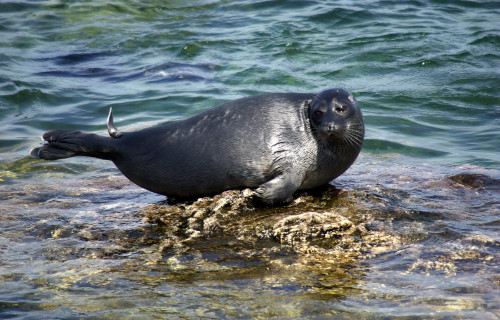
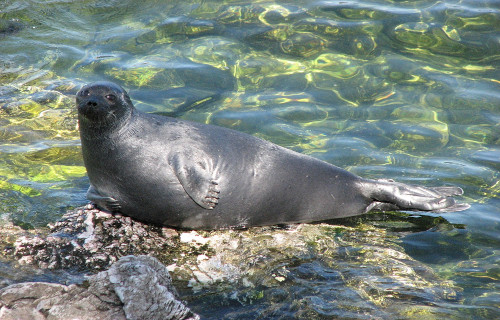
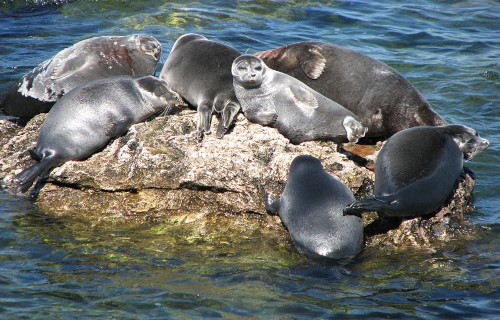









Leave a Reply